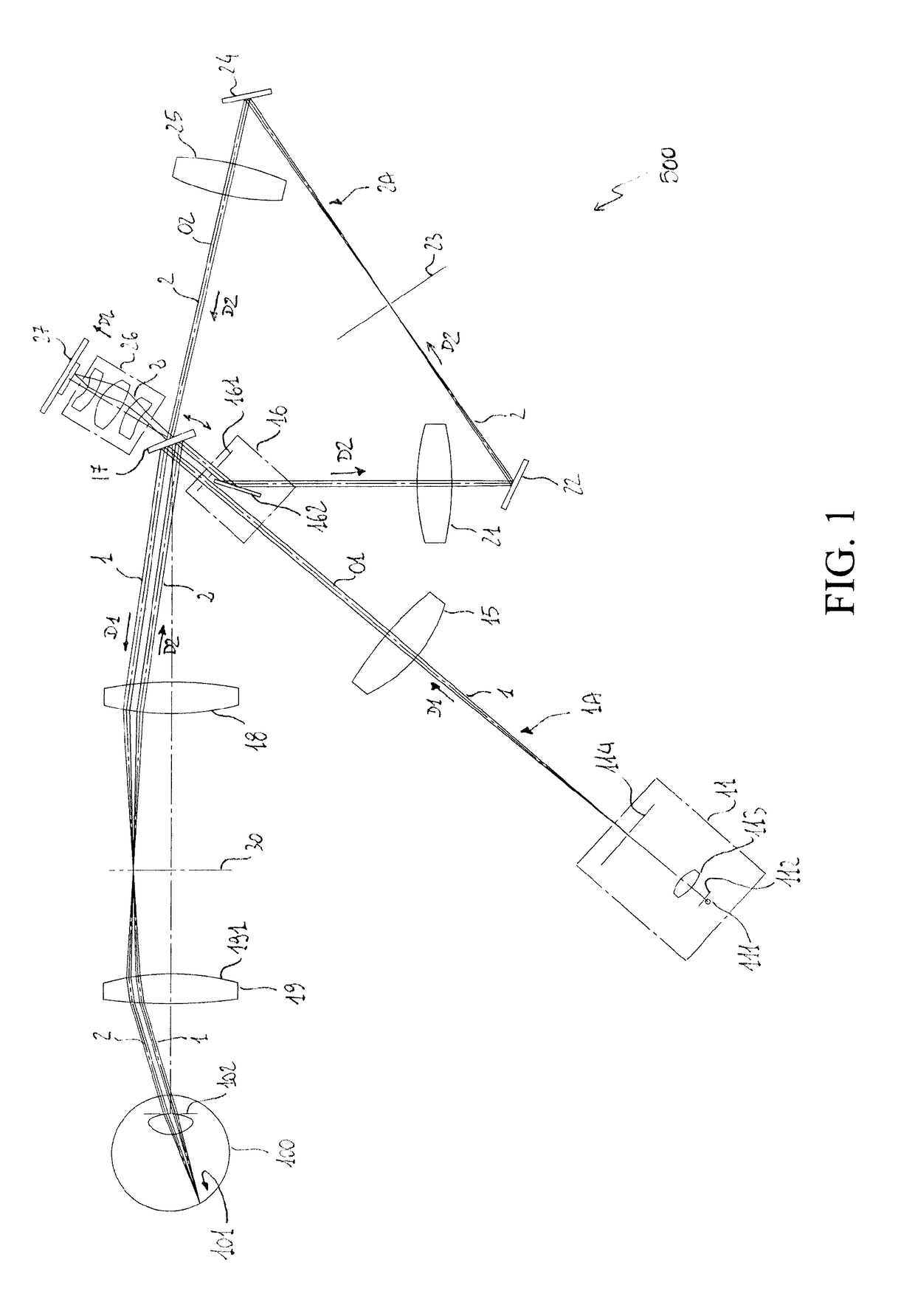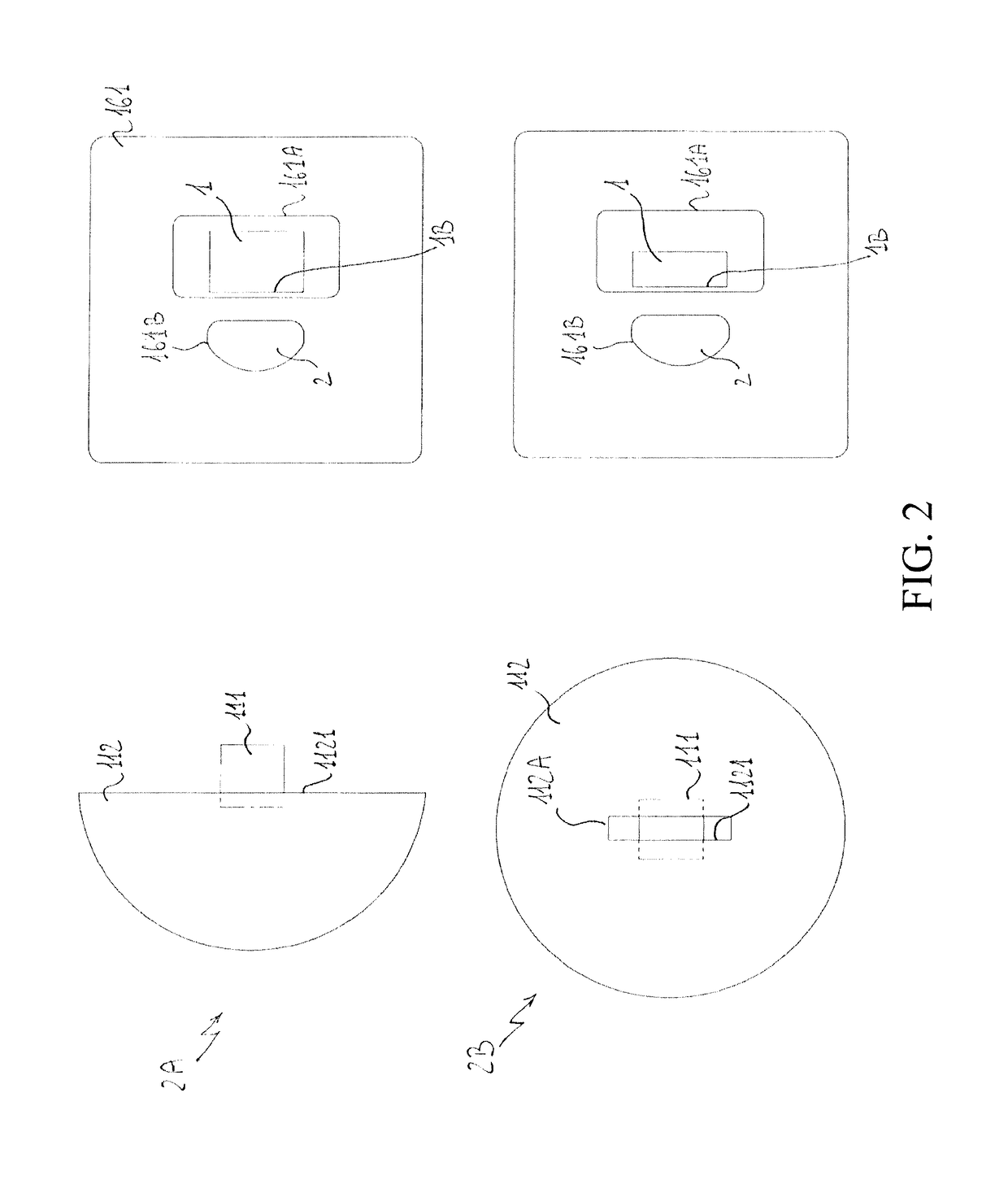Eye examination apparatus
a technology of eye examination and apparatus, which is applied in the field of eye examination apparatus, can solve the problems of inability to achieve the same degree of detail and natural color tones, the drawback is more pronounced in the case of infrared videos or photographs, and the need for high radiance illumination sources, etc., to achieve the effect of reducing light disturbance, maximizing light power, and being easy to produ
- Summary
- Abstract
- Description
- Claims
- Application Information
AI Technical Summary
Benefits of technology
Problems solved by technology
Method used
Image
Examples
Embodiment Construction
[0063]With reference to FIGS. 1-4, the present invention relates to an eye examination apparatus 500, in particular of confocal line scanning type. The apparatus 500 comprises a first illuminator 11 and an optical illumination path 1A having a first optical axis O1. Along the optical path 1A, a light beam 1 is projected in direction D1 by the illuminator 11 toward the retina 101 of the eye 100.
[0064]The apparatus 500 comprises acquisition means 27 adapted to receive light 2 reflected by the retina 101 and to acquire one or more images of the same retina.
[0065]The apparatus 500 comprises an optical imaging path 2A having a second optical axis O2. Along the optical path 2A, the light 2 reflected by the retina 101 travels in direction D2 until reaching the acquisition means 27.
[0066]The apparatus 500 comprises scanning means 17 adapted to move, along a scanning direction, the light beam 1 projected on the surface of the retina 101. Preferably, the scanning means 17 also have the functi...
PUM
 Login to View More
Login to View More Abstract
Description
Claims
Application Information
 Login to View More
Login to View More - Generate Ideas
- Intellectual Property
- Life Sciences
- Materials
- Tech Scout
- Unparalleled Data Quality
- Higher Quality Content
- 60% Fewer Hallucinations
Browse by: Latest US Patents, China's latest patents, Technical Efficacy Thesaurus, Application Domain, Technology Topic, Popular Technical Reports.
© 2025 PatSnap. All rights reserved.Legal|Privacy policy|Modern Slavery Act Transparency Statement|Sitemap|About US| Contact US: help@patsnap.com



